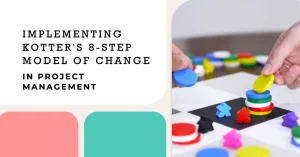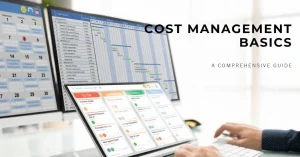I Introduction
Hey there, fellow Agile enthusiasts! If you’re anything like me, you know that Agile project management has taken the world of software development by storm. Its flexibility, adaptability, and focus on collaboration have revolutionized the way teams work together to deliver value. But what is the secret sauce behind Agile’s success? In this blog post, we’ll explore the very core of Agile – the Agile Manifesto, and its four foundational principles that have shaped this game-changing approach.
So, what exactly is Agile project management? In a nutshell, Agile is an iterative and incremental approach to software development that emphasizes collaboration, customer feedback, and continuous improvement. It’s all about breaking down big, complex projects into manageable chunks and constantly refining and adapting the process as you go. Agile methodologies empower teams to be more responsive, flexible, and innovative, which is why they’ve become so popular in today’s fast-paced tech landscape.
Now, let’s talk about the Agile Manifesto. Created back in 2001 by a group of 17 software developers, the Manifesto was a response to the shortcomings of traditional, plan-driven project management approaches, which often led to bloated, over-budget projects that failed to meet customer needs. These forward-thinking developers decided to create a new set of guiding principles that would put people, collaboration, and adaptability at the heart of the software development process – and thus, the Agile Manifesto was born.
In the upcoming sections, we’ll dive deep into each of the four foundational principles of the Agile Manifesto, exploring their importance and how they’ve shaped the Agile project management approach that we all know and love. So, grab your favorite beverage, get comfy, and join me on this exciting journey into the world of Agile!
II. Principle 1: Individuals and Interactions over Processes and Tools
Welcome back, Agile aficionados! Let’s dive right into the first principle of the Agile Manifesto: “Individuals and interactions over processes and tools.” On the surface, it might seem a bit counterintuitive, especially in a world where technology and automation are at the forefront of everything we do. But when you dig deeper, this principle is all about putting people first and recognizing the immense value of human connection in the software development process.
So, why is this principle so important? Well, think about the last time you were part of a team that truly clicked. Chances are, it wasn’t the tools or processes that made the magic happen, but the people and the relationships between them. By focusing on individuals and interactions, Agile teams can foster a culture of trust, open communication, and collaboration, which ultimately leads to more successful projects and happier clients.
Now, don’t get me wrong – processes and tools are essential in any software development project. However, the Agile Manifesto reminds us not to get so caught up in the nitty-gritty details of our methodologies that we forget about the human element. After all, it’s the people who bring their creativity, problem-solving skills, and passion to the table, and that’s what really drives innovation.
So, how can you put this principle into action? Here are a few tips to help you prioritize individuals and interactions in your Agile projects:
- Promote collaboration and communication: Encourage team members to actively share ideas, ask questions, and offer feedback. Regular stand-up meetings, pair programming, and open-door policies can all help facilitate open and honest dialogue.
- Foster a culture of trust and empowerment: Give your team members the autonomy and support they need to do their best work. Trust them to make decisions, take risks, and learn from their mistakes. This can lead to increased motivation, creativity, and productivity.
- Encourage feedback and learning: Create an environment where continuous improvement is the norm. Encourage team members to share lessons learned, both from successes and failures. This can help build a culture of learning and growth, making your team stronger and more adaptable.
By embracing this first principle of the Agile Manifesto, you’ll be well on your way to creating a more people-centric, collaborative, and successful software development team. In the next section, we’ll explore the second principle of the Agile Manifesto, which focuses on the importance of working software over comprehensive documentation. Stay tuned!
III. Principle 2: Working Software over Comprehensive Documentation
Hello again, Agile adventurers! I hope you’re ready to dive into the next principle of the Agile Manifesto, which states: “Working software over comprehensive documentation.” This principle challenges the conventional wisdom that extensive documentation is the key to successful software development. Instead, it emphasizes the importance of delivering functional software that meets customer needs, even if it means sacrificing some of the bells and whistles when it comes to documentation.
Why is this principle so crucial in the Agile world? Well, let’s be honest: how many times have you come across a software project that was bogged down by endless documentation, only to find that the final product didn’t quite hit the mark? In the rapidly evolving world of software development, it’s all too easy for documentation to become outdated or irrelevant. By prioritizing working software, Agile teams can focus on what really matters: delivering value to customers quickly and efficiently.
That being said, it’s important to strike the right balance between documentation and development. The Agile Manifesto doesn’t suggest that we should completely abandon documentation, but rather that we should be mindful of the trade-offs and focus on what truly adds value to the project. Ultimately, it’s about finding the sweet spot where just enough documentation supports the development process without hindering progress.
Here are some practical tips to help you implement this principle in your Agile projects:
- Use iterative development: Break your project down into smaller, manageable iterations that each deliver a piece of working software. This will allow your team to focus on delivering value incrementally, while also making it easier to adapt and update documentation as needed.
- Focus on delivering value: When working on documentation, ask yourself if it’s truly adding value to the project. Focus on creating documentation that supports the development process, helps your team collaborate, and provides essential information to stakeholders.
- Strike a balance between documentation and development: Remember that the goal is not to eliminate documentation, but to prioritize working software. Regularly review and assess your documentation efforts to ensure they’re aligned with your team’s goals and the needs of your customers.
By embracing the principle of working software over comprehensive documentation, you’ll be well on your way to creating an Agile team that is nimble, efficient, and customer-focused. In the next section, we’ll explore the third principle of the Agile Manifesto, which emphasizes the importance of customer collaboration over contract negotiation. Keep on reading, and I’ll see you there!
IV. Principle 3: Customer Collaboration over Contract Negotiation
Welcome back, Agile enthusiasts! Today, we’re going to explore the third principle of the Agile Manifesto, which states: “Customer collaboration over contract negotiation.” This principle emphasizes the importance of building strong, collaborative relationships with customers, rather than getting bogged down in lengthy and rigid contract negotiations. After all, at the heart of Agile is the belief that delivering value to customers is the ultimate measure of success.
So, why is customer collaboration such a vital part of Agile? Well, think about the most successful projects you’ve been a part of. Chances are, they involved a strong partnership between your team and your customers. By working closely with customers and involving them in the development process, Agile teams can ensure that they’re delivering the right solutions to the right problems, and making adjustments as needed along the way. This collaborative approach not only leads to happier customers, but also more successful projects.
Of course, this doesn’t mean that contracts aren’t important. They still play a crucial role in defining expectations and establishing a solid foundation for collaboration. However, the Agile Manifesto reminds us that the real magic happens when we go beyond the confines of the contract and engage with our customers as true partners in the development process.
Here are some tips for fostering customer collaboration in your Agile projects:
- Involve customers in the development process: Engage your customers early and often by involving them in planning, reviews, and demonstrations. This not only helps ensure that their needs are being met, but also provides valuable feedback that can help your team adapt and improve.
- Regularly review and adjust project scope: In the Agile world, change is inevitable. Be prepared to adjust your project scope based on customer feedback and evolving needs. This flexibility will help you stay focused on delivering value, even when the unexpected happens.
- Create a flexible and transparent environment: Foster a culture of openness and trust by being transparent about your progress, challenges, and successes. This will help your customers feel more connected to your project and more confident in your ability to deliver the solutions they need.
By embracing customer collaboration over contract negotiation, you’ll be well on your way to creating a more responsive, adaptable, and customer-centric Agile team. In the next and final section, we’ll delve into the fourth principle of the Agile Manifesto, which highlights the importance of responding to change over following a plan. Stay tuned, and I’ll see you there!
V. Principle 4: Responding to Change over Following a Plan
Hello once more, Agile aficionados! It’s time to explore the final principle of the Agile Manifesto, which states: “Responding to change over following a plan.” This principle emphasizes the importance of embracing change as an opportunity for growth and innovation, rather than rigidly sticking to a predetermined plan. In the dynamic world of software development, the ability to adapt to new information, shifting priorities, and unforeseen challenges is essential for success.
So, why is responding to change so important in Agile? Well, let’s face it: no matter how well we plan, the unexpected is bound to happen. Market conditions shift, customer needs evolve, and new technologies emerge. By prioritizing adaptability, Agile teams are better equipped to navigate these changes and deliver value, even when the path forward isn’t entirely clear.
This isn’t to say that planning isn’t important in Agile. In fact, planning is an essential part of the iterative process that helps teams stay aligned and focused on their goals. However, the Agile Manifesto reminds us that plans should be viewed as a starting point, not a rigid roadmap. It’s crucial to be open to reevaluating and adjusting your plans based on new information and feedback.
Here are some tips to help you embrace change and embody this principle in your Agile projects:
- Embrace change as a driver of innovation: View changes not as setbacks, but as opportunities for growth, learning, and improvement. This mindset shift can help your team become more resilient and creative in the face of challenges.
- Utilize iterative planning and continuous improvement: Regularly revisit and reassess your plans to ensure they’re still aligned with your team’s goals and your customers’ needs. This iterative approach to planning allows for more flexibility and adaptability as your project progresses.
- Be open to feedback and new ideas: Foster a culture where feedback and new ideas are welcomed and encouraged. By actively seeking input from your team members and customers, you’ll be better equipped to identify and respond to changes that may impact your project.
By embracing the fourth principle of the Agile Manifesto, you’ll be well on your way to creating a more adaptable, innovative, and resilient Agile team. Congratulations on making it through this deep dive into the four foundational principles of the Agile Manifesto! I hope you’ve found it insightful and inspiring. Now, go forth and bring the power of Agile to your projects!
VI. Conclusion: Embracing the Agile Mindset for Success
And there you have it, my fellow Agile enthusiasts – we’ve explored each of the four foundational principles of the Agile Manifesto and discovered how they shape the Agile project management approach we know and love. By now, I hope you have a deeper understanding of these guiding principles and how they can empower your team to deliver value more efficiently, collaboratively, and adaptively.
As we wrap up our deep dive, I want to leave you with a few final thoughts on embracing the Agile mindset in your projects:
- It’s about the mindset, not just the methodology: Remember that Agile is more than just a set of tools or practices; it’s a mindset that values collaboration, adaptability, and continuous improvement. Keep these principles at the heart of your project management approach, and you’ll be well on your way to Agile success.
- Be open to learning and growing: Agile is all about continuous learning and growth. Embrace this mindset by being open to new ideas, feedback, and change – even when it’s challenging or uncomfortable. This willingness to learn and adapt will help you become a more effective and resilient Agile practitioner.
- Don’t be afraid to experiment: One of the greatest strengths of Agile is its flexibility. Don’t be afraid to try new techniques, tools, or practices to see what works best for your team and your project. By experimenting and iterating, you’ll continually refine your approach and discover new ways to deliver value more effectively.
Thank you for joining me on this journey through the Agile Manifesto and its four foundational principles. I hope you’ve found this exploration both engaging and enlightening, and I hope it inspires you to bring the power of Agile to your projects. Remember, the Agile mindset is all about embracing change, fostering collaboration, and continually striving to improve – and with these principles as your guide, there’s no limit to what you and your team can achieve. Good luck, and happy Agile-ing!
To find out how Artificial Intelligence is changing the Project Management landscape, you have enjoy reading this article https://www.shaunstoltz.com/did-artificial-intelligence-just-change-everything-about-project-management/
Find out more about Shaun Stoltz https://www.shaunstoltz.com/about/
This post was written by an AI and reviewed/edited by a human.



